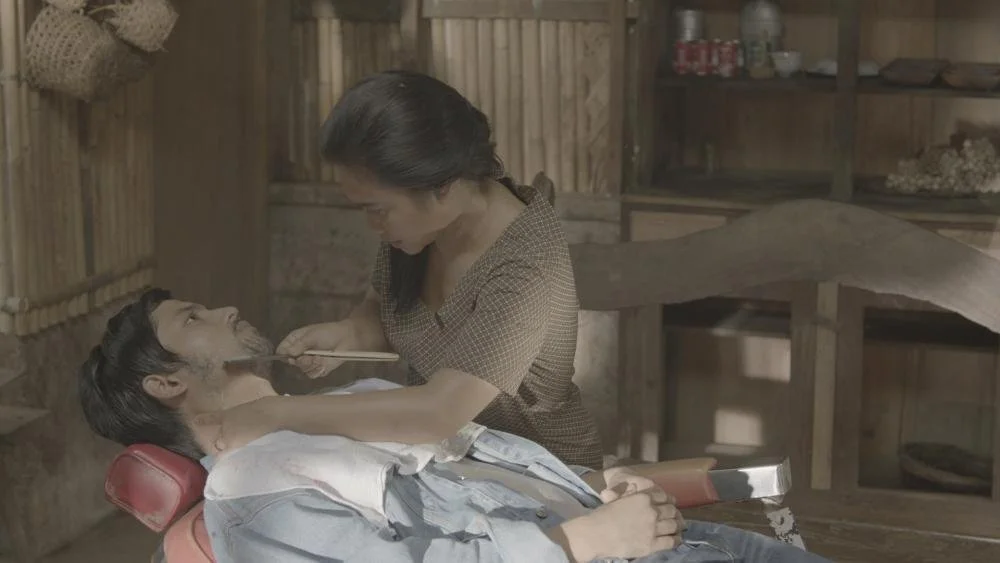‘Good for Her’: Female Rage in Art and Media
“For hell hath no fury like a woman scorned”.
Written by Samwel Rasheed Tan
March 29, 2023
Judith Beheading Holofernes by Caravagio, c. 1598 - 1599. Image Credit: Creative Commons.
Female rage has been a topic of discussion for centuries. Women have been told to suppress their emotions and to be polite and accommodating, but that has not stopped them from expressing their anger through art and media. From the suffrage movement to the #MeToo movement, women have used their voices to fight for equality and justice. In recent years, female rage has become more prevalent in popular culture, with artists and filmmakers using this powerful emotion to create powerful works of art.
The portrayal of female rage in art and media has evolved over time. In the past, women were often depicted as hysterical and irrational when they expressed their anger. The term “hysteria” was used to describe women who were emotional or passionate, and it was often used to discredit them. However, in recent years, artists and filmmakers have begun to portray female rage in a more nuanced and complex way.
As Women's National Month wraps up, familiarize yourself with how this concept is explored on different mediums.
Judith Slaying Holofernes by Artemisia Gentileschi. Image Credit: WikiMedia Commons.
Judith and Holofernes
One of the most iconic portrayals of female rage is a tale deeply rooted and rich in history with Judith and Holofernes. The story revolves around a Jewish widow named Judith as she seduces and kills an Assyrian general named Holofernes as an act to save her people. It is this act of killing that has resonated in the minds of artists and has thus been a subject of multiple depictions in various artworks to represent female rage and empowerment.
Despite the various interpretations of the classic tale through history, however, it is Artemisia Gentileschi's adaptation that embodies the concept of female rage the most. Being a survivor of sexual assault herself, Gentileschi was able to depict the tale, unlike previous iterations of the same tale. Specifically, in her version of the story, Judith is shown as a strong and determined woman, who is not afraid to take matters into her own hands. The painting shows her and a helper using all their strength as they work together to hold down Holofernes while Judith decapitates him with a sword. Her face is contorted with anger and determination, and the blood from Holofernes' neck spatters onto her dress, emphasizing the visceral nature of the act.
By showing women working together and taking revenge on an oppressor, Gentileschi was challenging the traditional gender roles of her time and asserting her own agency and power—a theme barely touched in 17th-century Europe. Her painting has become a symbol of female rage and resistance and a reminder that women are capable of fighting back and will fight back when need be.
Eugene Domingo shows her dramatic chops in full display in Barber's Tales.
Barber's Tales
Female rage in art and media stems from a reaction against the continued mistreatment of women who have been biding their emotions for so long. What comes out is a release that is loud and visible, perhaps may be viewed as unconventional and new because women have been unjustly conditioned to keep their emotions in check for too long. Oftentimes, female rage inspires and is justly in its iteration. Such can be seen in Jun Robles Lana’s Barber’s Tales. The film follows a widowed Eugene Domingo as Marilou who inherits the barber shop of her late husband—detailing her transformation from a timid wallflower towards self-discovery and freedom.
Barber's Tales showcases the best of what female rage could be: its transformative, powerful, and unrelenting to the status quo that has put women down, whilst being conducive to the betterment of society and the issues that plague it. The film sees Marilou rage and challenge conformity and the gender roles the era was set in.
Medusa with the Head of Perseus by Luciano Garbati. Image Credit: Sarah Patt of UNTAPPED NEW YORK.
Medusa with the Head of Perseus
Greek Mythology has also been a primary example of female rage through history, from Hera's antics as retaliation for Zeus' infidelity, along with the countless mortals and heroes their goddesses have punished, one of the best examples in modern-day is a subversion of a classic myth in that sphere. Namely, the myth between Medusa and Perseus. In this depiction by visual artist Luciano Garbati, he turns the tale over its head by presenting Medusa as the stern victor in her bout with Perseus.
In doing so, the sculpture became a symbol of female rage and defiance, serving as a reminder that women are capable of fighting back against their oppressors. Greek tales always had a defining characteristic about the struggle to fight against fate and destiny, and how futile it is to go against them. In flipping Medusa from a tragic figure to a symbol of strength, resiliency, and power, the artwork becomes more poetic as it not only fights against the constraints of the structure of Greek stories but also challenges the norms and wrongs that have harmed women for the longest time.
Krysten Ritter, the titular main character for Marvel's Jessica Jones. Image Credit: Netflix.
Marvel's Jessica Jones
Superhero and comic book stories often get a terrible rep, often generalized into being a lowbrow form of art and media amongst certain circles. From Martin Scorsese, David Fincher, James Cameron, and Quentin Tarantino, prolific figures in the scene have spoken out against them for not being "real movies" and such, pertaining to their lack of intellectual nuance. While there may be some grounds for their stance, there are some entries that prove to challenge the idea, superhero stories with layered complexity that will even the most staunch critics recognize the medium. From Logan to The Dark Knight, in the television medium, there is Daredevil, and in the subject of this article, there is also Marvel's Jessica Jones.
Marvel's Jessica Jones follows the life of the superheroine, her journey and battles against PTSD, past traumas, and how she navigates both the professional and personal sides of her life all while she faces some dangerous superpowered villains.
The show explores the different effects of unmitigated female rage in its story and especially its main character. It shows a complex portrait regarding the idea—how it isn’t always just and righteous, how it can be paralyzing, self-destructive, and terrifying to women themselves if left unchecked, and ultimately, the ways it channeled into the different facets of one’s life.
Final Word
The portrayal of female rage in art and media has evolved over time. Women have used their voices to express their anger and to fight for justice and equality. Female rage in popular culture has become more nuanced and complex, and it has been used to address social and political issues, challenge gender stereotypes, and promote a more inclusive and equitable society.
Moving forward, be it through art, media, or mass movements—it will be important to continue to listen to the voices of women and to support their efforts to express their anger as they vie to reclaim agency, freedom, and the ability to challenge the status quo.
Samwel Rasheed Tan is a fourth-year student currently taking BA Communication (Convergent Media) at Far Eastern University. His creative specialty lies in media analysis and arts writing. He is currently an intern for Art+ Magazine and is expected to graduate from his degree this coming July.





